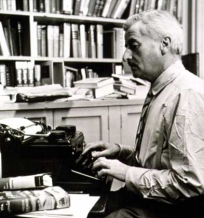7 Writing Styles
"Read everything," said Faulkner. "Trash, classics, good and bad, and see how they do it.
Just like a carpenter who works as an apprentice." If learning by imitation was good enough
for William Faulkner, why not try it yourself? The goal of this Web site is
 to help you become a better writer by learning from the work of others. To this end, I selected
seven writing styles that will open your eyes. By exploring these styles, you'll hopefully learn new ways of
seeing, and your writing will improve.
to help you become a better writer by learning from the work of others. To this end, I selected
seven writing styles that will open your eyes. By exploring these styles, you'll hopefully learn new ways of
seeing, and your writing will improve.
Let's begin with the seven styles: Klutzy, Lyric, Boffo, Romantic, Spare, Irresistible, and Crafty.
Having taught English for fourteen years at Boston College, I realize that some of my colleagues may
cringe at my categories, but stay with me and don't let the names frighten you off.
Klutzy is a style many great writers and thinkers fall into, including
Balzac and Hegel, yet we can learn from it.
Lyric refers to writers whose sentences roll on
like waves, numbing and seducing at the same time,
writers like Melville and Faulkner, many with poetic talent that appears in their prose.
Boffo is
an admittedly cutesy word describing the brio of writers whose work sparkles with intimate,
personal, and engaging riffs on the English language, writers like Tom Wolfe and Hunter S. Thompson.
Romantic includes writers who take you on
a journey to another world, one where emotion is paramount,
where love and mystery merge, and where plot and story move the action: Edgar Rice Burroughs,
George Orwell, and Kafka (yes, Kafka!) are examples.
Spare, of course, describes writers like Hemingway,
James M. Cain, and even many technical writers like Donald E. Scott and Lester Packer.
Irresistible
is a term I reserve for writers who hook you with stories you can't put down. Many modern best sellers fall into this
category, as well as past masters such as Maugham, Lovecraft, and Philip K. Dick. Finally
Crafty is
the term I've used to describe writers who have other tricks up their sleeve, often combining techniques
 used by great writers with more modern stylistic ideas, writers like Paul Theroux, P.D. James, and
even Sigmund Freud.
used by great writers with more modern stylistic ideas, writers like Paul Theroux, P.D. James, and
even Sigmund Freud.
I hope you enjoy these pages and that you learn something from them. If you do, feel free to send me your thoughts. (Photo: William Faulkner at work.)
My new book Write Like the Masters: Emulating the Best of Hemingway, Salinger, Faulkner and Others explains how to learn from the greatest writers of the past two hundred years. The advice is based on time-tested rhetorical principles and allows readers to jumpstart their writing careers by learning how to absorb the best of the best. The greatest writers all learned these techniques, but imitation was phased out of American education in the 1930's so you were probably denied any exposure to this proven learning tool. Once you learn to imitate the way Shakespeare, Melville, and Dickens did, you too will reap the rewards and will find writing a new joy. (Photo: cover of "Write Like the Masters.")